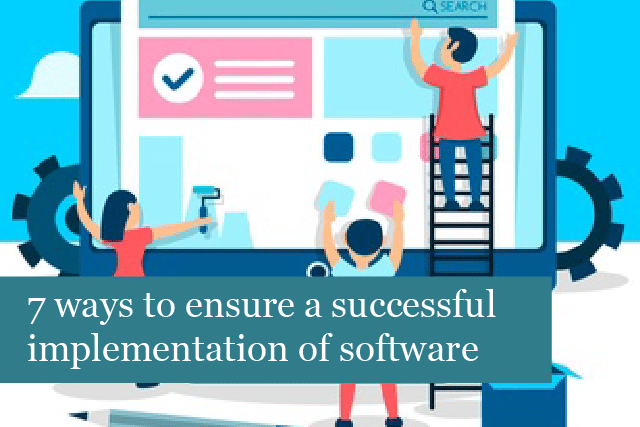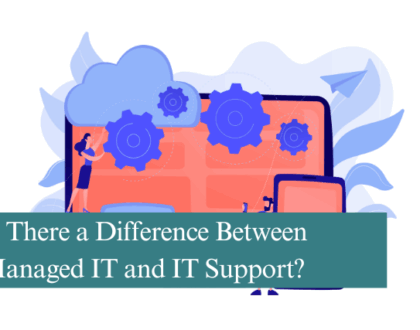
You may be surprised or not so surprised to know that the majority of software implementation projects do not finish on time. In fact it is said that 50% of all software projects actually go on to never be completed.
If you’re looking at a software implementation sometime in the near future then don’t fret as there are a number of things you can keep in mind to ensure your project stays on track. So whether you are looking to implement Microsoft Sharepoint, Dynamics or any other software, find these rules below.
1. Make sure to appoint a project manager
The person in your organisation that will be managing the project doesn’t have to be particularly technically minded (although this does help). They just need effective organisation, planning and monitoring skills to keep the implementation moving forward.
When a single person is identified to be the project manager it clearly defines responsibilities and means that all parties know who to communicate with for what.
2. Spend time to get to know your new software
Once you’ve chosen the best solution for your business, it’s important that you spend time getting to know what it is capable of and how it works. It’s a good idea to understand the processes that your software will assist with and how your new workflows may look.
For instance if you are implementing Microsoft Sharepoint, you’ll probably spend time becoming familiar with how contacts are added, appraised and managed. If you are implementing Microsoft Dynamics you may want to understand how you can reduce the burden of administration tasks through automation.
If it’s possible you’ll want to try and get access to the software before it is implemented or at the least the opportunity to review the demo a number of times. If you have the resources available we suggest allowing at least two staff members to get to know the system so that they can deal with any questions as well as create buy in from your teams.
3. Set a plan
Proper planning prevents poor performance as they say. Through communication with your service provider and discussions internally it is best practise to devise realistic milestones and timescales to measure your implementation against. Remember to factor in things like staff absence and staff training and give yourself plenty of additional time to be used if necessary. If you were looking to implement software such as Microsoft Sharepoint and already used an existing CRM, we’d suggest a plan similar to:
Week 1 – Allow a few staff to become familiar with the new software and how it will change workflows, policies and procedure
Week 2 – Set up Sharepoint and transfer any existing data from any old systems, creating a clean start.
Week 3 – Introduce the new software to any teams effected as well as notify them of any new processes.
Week 4 – Conduct training sessions with all teams. We would suggest breaking these down into a series of meetings, each focussing on how to use the software, how specific processes will be impacted.
Week 5 – Conduct final tests of the software and roll out the CRM alongside your old one. Only allow staff members to access the previous software to access any data that you have not transferred over.
Week 6 – Turn off the old software!
5. Keep updating your plan and communicate
As you proceed through your plan make sure that you update it accordingly. Not everything will go according to how you envisaged so it’s important that you stay connected to your managed service provider as well as key members of your internal team. This prevents any unexpected issues that will cause more delays in the long run.
6. Be sure to get buy in from your staff
Through your training it is important that your staff teams appreciate why the new software is being introduced. Through a few sessions you should explain what is currently not working and how the software being implemented will solve these problems. Emphasising how the software will save your staff time or reduce the burden of boring processes will go a long way to getting your staff on board.
If you’re working with an IT provider it’s worth asking what support you can receive in this area. If they’re anything like us they will offer bespoke staff training that will include everything needed to get your project implemented successfully.
7. Take your time when rolling out
You should keep to your original plan and milestones as closely as possible however do take the time to delay a roll out if you have to adjust the plan to respond to any issues.
It’s worth delaying an implementation by a month rather than rushing the final steps resulting in a stressful few weeks.
8. Work with your service provider
If you’ve involved a managed service provider like us, or are dealing with the vendor directly, remember that they are there to help and support you.
Whether you need support in identifying how your software can help you to it’s full capabilities or bespoke training around process changes, get in touch with the team responsible for supporting your role out. Equally these parties can advise you in future when updates offer increased functionality or resolve any bugs.
As a service provider, Mansys can help with:
1) Selecting Suitable Software – we’re completely independent and therefore have only an interest in providing you the most effective solution for your needs
2) Project Management – we can support your entire roll out as well as devise timescales, goals and your broader plan
3) Infrastructure Support
4) Single Point of Contact for users – Mansys will manage the software company on your behalf
Get in touch to learn more about how we can help you on your next software implementation.
Recommended Posts

Is There a Difference Between Managed IT and IT Support?
13th June 2025


